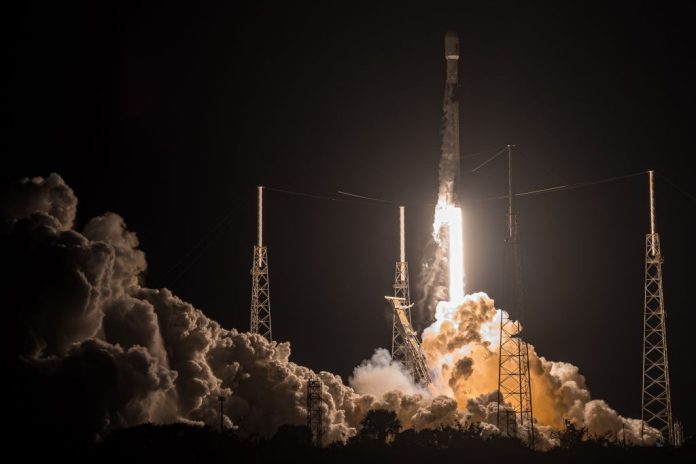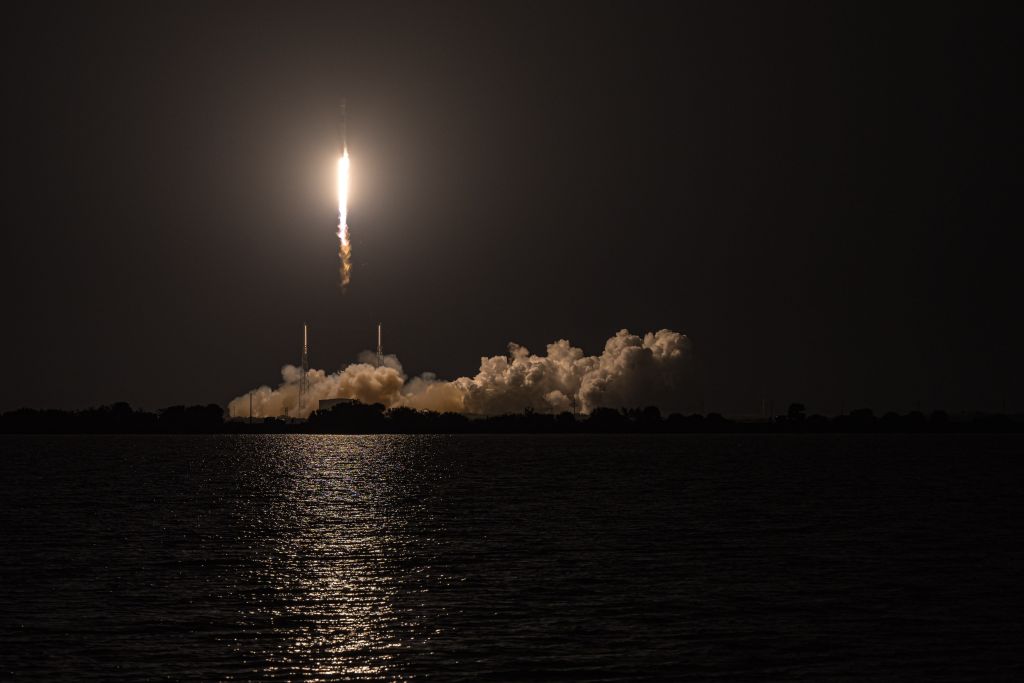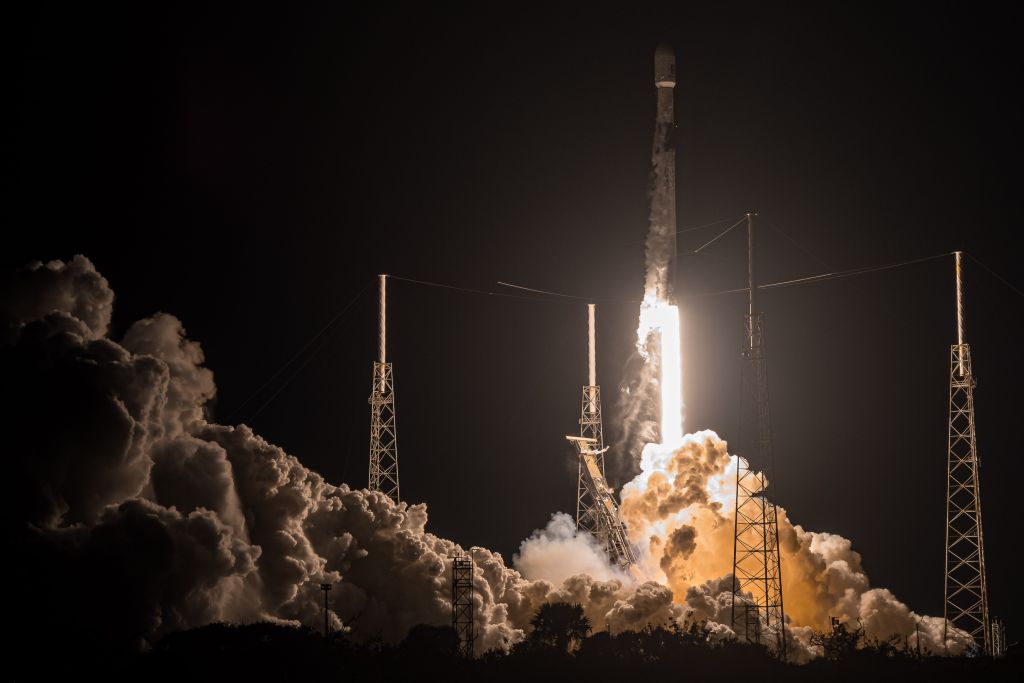
(www.MaritimeCyprus.com) With both extraordinary Inmarsat-6 satellites in space, Inmarsat has taken the next major step on its journey to cater for Maritime’s future connectivity needs.
I-6 F2, the second of two state-of-the-art Inmarsat-6 satellites, launched on 17 February 2023. Alongside I-6 F1, which was launched in December 2021, the identical pair are Inmarsat’s first hybrid geostationary Earth orbit (GEO) satellites – and the most sophisticated commercial communications satellites ever built.
Featuring both Ka-band (Global Xpress) and L-band (ELERA) payloads, they represent the largest ground network expansion in Inmarsat’s history and a key step in the company’s visionary technology roadmap that will see a further five satellites launched by 2025.
Inmarsat designed the new satellites to maximise the available payload on board, with Airbus Defence and Space's all-electric propulsion system one of the key contributors to this goal. The electric propulsion system not only takes up much less mass than a traditional chemical propulsion system but also carries the environmental benefit of minimising the use of hazardous chemical propellants.
F1 has now reached its position over the Indian Ocean, while F2 is on its way to be positioned over the Atlantic Ocean. However, even before these sophisticated satellites were launched, they had already set themselves apart from previous Inmarsat satellites.
Innovations in communications
The I-6s represent a leap in the capabilities Inmarsat can provide for customers. “The new I-6 satellites will bring 50% more spectrum,” explains Inmarsat CTO, Peter Hadinger. “They have twice the processing power and twice the power that we can transmit, so we can easily get four times more capacity through the network than we do today.” Hadinger emphasises that these new satellites represent a significant investment in Inmarsat’s L-band services for the future.
As Mark Dickinson, Inmarsat’s Vice President of Space Segment, emphasises, “We place a lot of pride in our L-band heritage, and the ethos within Inmarsat still has that at its core – we are providing mission-critical systems for those who need it most.”
The extra L-band capacity the I-6s offer is in fact double what was offered by the entire 1–4 generation of ELERA satellites that preceded them. With 99.95% reliability, resilience and availability, these new satellites will ensure the continuation of Inmarsat’s market-leading critical maritime safety services well into the 2040s.
As a dual-band satellite, the Ka-band element of this satellite also has much to offer.
“At the same time, we’re taking advantage of the fact that we are putting a new spacecraft into orbit by adding new Ka-band capacity,” expands Dickinson. “This new capacity is very flexible, offering 20 Ka-band spot beams per I-6 satellite that can be directed to meet customer demand second by second, meaning we can steer capacity to ‘hotspots’ around the world.”
Capacity for the future
For an industry driving digitalisation with such force, connectivity is a necessity, and the reassurance of ample coverage in the future is therefore vital – especially as ship owners and operators are increasingly reliant on comprehensive connectivity strategies to achieve long-term ambitions.
These ambitions include improving fleet performance, optimising operations, attracting and retaining crew, implementing decarbonisation strategies and generally improving profit margins, as demonstrated by some of our key customers in Inmarsat’s report ‘The Network Effect: Strategising Connectivity at Sea for Maximum Impact’. This rising dependency on digital technologies that serve these ambitions requires significant connectivity capacity.
“We know our customers will continuously be looking for more bandwidth and new features, which is why the increased capabilities offered by these new I-6s are an important part of our long-term strategy to cater for their needs into the future,” explains Peter Broadhurst, VP of Safety, Inmarsat Maritime.
Those additional capabilities and features are set to become more important as connected digital technologies evolve. Digital technologies already offer a vast array of functions, from AI-enhanced voyage management and IoT-backed condition-based monitoring and maintenance to trade automation processes, automated emissions reporting and transparent collaboration platforms.
The levels of sophistication and functionality of these digital technologies will only grow as industry-wide adoption progresses – and they are predicted to be increasingly data-hungry.

Enhanced safety services
In addition to flexible capacity, delivered by the I-6s’ steerable Ka-band spotbeams to prevent issues in congested areas, the satellites’ expanded L-band offering for the ELERA network has much to offer maritime customers. ELERA enables not only Internet of Things (IoT) services – which will support the industry’s move towards automation, predictive maintenance and more – but also critical safety services.
Although Inmarsat’s safety services already deliver an unprecedented level of dependability and availability anywhere in the world, its new Fleet Safety services will bring even greater resilience and redundancy. Broadhurst summarises: “Our services are already dependable, but now we’ll have even more backup. Full global coverage for Fleet Safety will be enhanced with contingency in every area thanks to the additional capacity of the new satellites.”
Again, additional capacity forms part of Inmarsat’s long-term roadmap to ensure not only the continuation of its safety services but also investment in enhanced features that go beyond the required GMDSS services. Examples include automatic distress alerts sent to a network of over 60 rescue coordination centres in less than two seconds and a ‘Two-way Distress Chat’ function that puts crews into a chat room, offering direct and constant contact with nearby search and rescue teams and local vessels, plus real-time vessel tracking.
Building a bigger picture
The I-6 satellites will also support Inmarsat’s network of networks, ORCHESTRA – a multi-orbit network that will seamlessly combine the ELERA (L-band) and Global Xpress (Ka-band) GEO networks with terrestrial 5G mesh technologies and targeted low Earth orbit (LEO) capacity to create a single advanced solution for global mobility.
ORCHESTRA will offer customers the highest-capacity connectivity available anywhere in the world for the mobility market, bringing the fastest average speeds and the lowest average latency of any planned or existing network.
“Our roadmap for the future will see us manage rising demand for connectivity well into the 2040s,” says Inmarsat’s Senior Director of Growth Markets, Marco Cristoforo Camporeale. “These I-6 satellites are just one step in the journey but are a significant and reassuring one, demonstrating that we will remain dependable and capable in the future. Our planning and investing now means our customers can rely on us for the foreseeable future, and that’s exactly why we’re doing it.”













